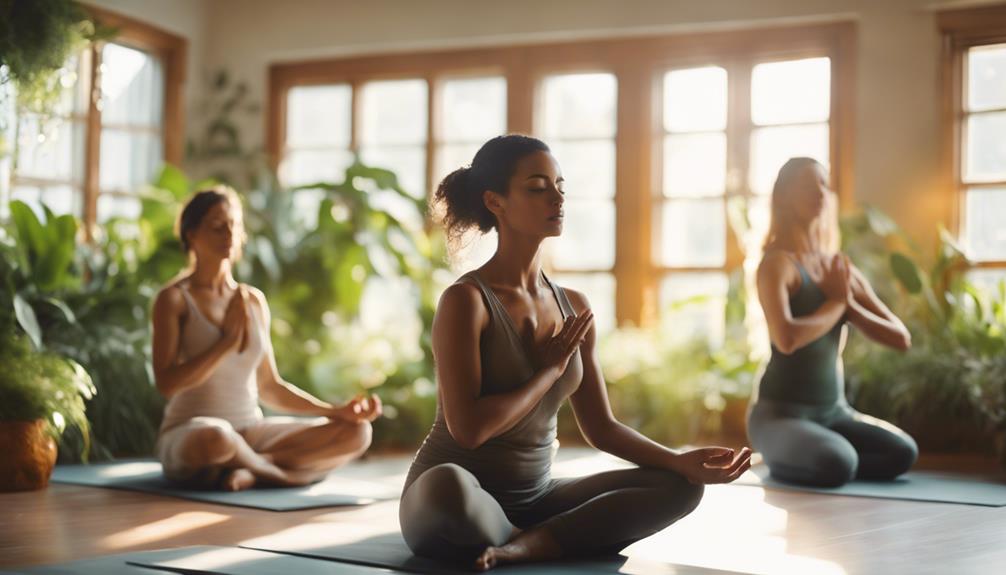When Yoga Can Be Done

Yoga is an ancient practice that has gained immense popularity in recent years, thanks to its numerous physical and mental health benefits. However, many practitioners often wonder, “When can yoga be done?” This question is crucial for maximizing the benefits of yoga and integrating it into a busy lifestyle. In this article, we will explore the best times to practice yoga, considering various schedules, goals, and lifestyles.
Morning Yoga: Start Your Day with Energy
One of the most effective times to practice yoga is in the morning. Morning yoga can set a positive tone for your entire day. Engaging in yoga as soon as you wake up helps to awaken your body, improve flexibility, and boost energy levels. By practicing yoga in the morning, you can enhance your focus and productivity throughout the day. Additionally, it allows you to establish a consistent routine, making it easier to prioritize your health and well-being.
Midday Yoga: Rejuvenate Your Mind and Body
If mornings are too hectic, consider fitting in a yoga session during your lunch break or midday. Midday yoga can be an excellent way to break up your day, especially if you have a sedentary job. Practicing yoga during this time can help reduce stress, alleviate tension in the body, and improve concentration. Even a short 15-20 minute session can work wonders, allowing you to return to work feeling refreshed and focused. This approach can also serve as a great mental reset, helping you tackle the rest of your day with renewed energy.
Evening Yoga: Wind Down and Relax
Evening yoga is another popular option for those looking to incorporate yoga into their daily routine. Practicing yoga in the evening can help you relax and unwind after a long day. It allows you to release accumulated tension, both physically and mentally, preparing your body for a good night’s sleep. Gentle yoga poses, such as restorative or yin yoga, are particularly effective in the evening. By integrating evening yoga into your routine, you can promote better sleep quality and a more peaceful mindset.
Related Posts:
Weekend Yoga: Make Time for Longer Sessions
Weekends offer a unique opportunity for longer yoga sessions. If your weekdays are packed with commitments, utilizing your weekend for yoga can be beneficial. Weekend yoga allows you to explore more complex poses, deepen your practice, and even participate in workshops or classes that may not be available during the week. This time can also be used to try different styles of yoga, such as vinyasa, hatha, or power yoga, giving you a broader experience and understanding of the practice.
Yoga Anytime: Flexibility in Your Practice
One of the most attractive aspects of yoga is its flexibility. Yoga can be practiced anytime, anywhere, making it an accessible form of exercise. Whether you have 10 minutes or an hour, you can carve out a space for yoga in your daily routine. Even short sessions of yoga can provide significant benefits, such as increased flexibility, improved mood, and better overall health. This flexibility allows you to adapt your practice to your lifestyle, ensuring that yoga fits seamlessly into your life.
Seasonal Yoga: Adapt Your Practice Throughout the Year
When considering when yoga can be done, it’s also essential to think about seasonal changes. Different times of the year can influence your yoga practice and routine. For example, during colder months, you might prefer indoor classes or heated yoga to maintain warmth and flexibility. Conversely, warmer months might inspire outdoor yoga sessions in the park or beach. Adapting your practice to the seasons not only keeps it fresh and exciting but also aligns with your body’s natural rhythms, enhancing your overall experience.
Yoga for Specific Goals: Tailoring Your Practice
The timing of your yoga practice can also depend on your specific goals. If you are seeking to build strength or improve flexibility, morning sessions may be more beneficial. Conversely, if your focus is on stress relief or relaxation, evening yoga can be more effective. Additionally, if you are preparing for an athletic event or other physical activity, practicing yoga before or after your workouts can enhance performance and recovery. By tailoring your practice to your goals, you can maximize the benefits of yoga and achieve the results you desire.
Conclusion: Finding Your Ideal Yoga Schedule
In conclusion, the question of when yoga can be done is incredibly personal and varies from individual to individual. Whether you choose to practice in the morning, midday, evening, or even on weekends, the key is to find a schedule that aligns with your lifestyle, goals, and preferences. Consistency is essential for reaping the benefits of yoga, so aim to incorporate it into your routine in a way that feels natural and enjoyable. Ultimately, the best time to practice yoga is the time that works for you, allowing you to cultivate a fulfilling and sustainable yoga journey.
By understanding the various times and contexts in which yoga can be practiced, you can create a routine that not only enhances your physical health but also supports your mental and emotional well-being. Embrace the flexibility of yoga and find your ideal practice time today!What Do You Wear To A Yoga ClassHow To Start Yoga With Adriene